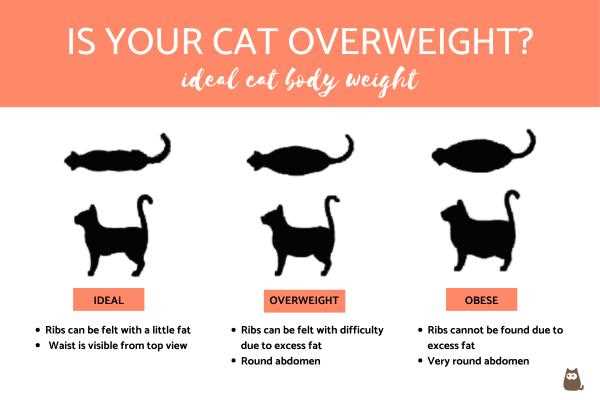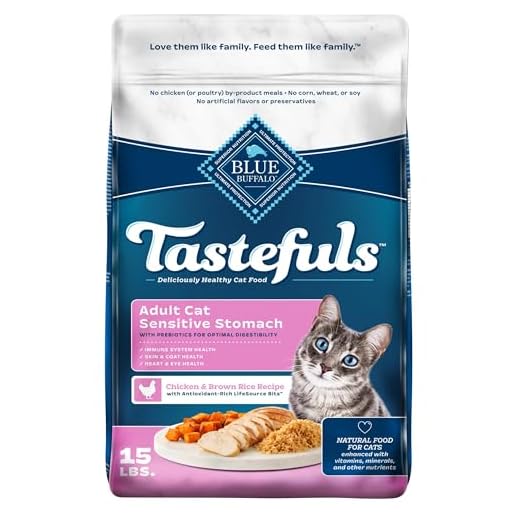



It’s crucial to consult a veterinarian immediately if I suddenly refuse meals and my body condition is declining. This situation can indicate underlying health issues that require professional evaluation.
Common factors include dental problems, gastrointestinal disorders, or stress-related triggers. Regular check-ups can help catch these issues early. Ensure my environment is calm and that I feel safe, as anxiety can significantly impact my eating habits.
Another aspect to consider is the type of food provided. Changes in flavor, texture, or brand can discourage me from consuming meals. Offering a variety of options can entice my palate. Keeping my dining area clean and quiet also plays a role in encouraging consumption.
Monitoring my weight regularly helps identify trends that may warrant action. If my decline persists, further diagnostic testing might be necessary to rule out serious conditions. Addressing these concerns promptly ensures my health remains a priority.
Common Medical Issues Causing Appetite Loss
Dental diseases like gingivitis can lead to discomfort while chewing, influencing food intake. Regular dental check-ups are advisable to monitor oral health and prevent complications.
Kidney dysfunction is prevalent among older felines. Symptoms include increased thirst and urination, often accompanied by a decline in appetite. Early detection through routine blood tests can help manage this condition effectively.
Hyperthyroidism, characterized by excessive hormone production, often results in increased metabolism and subsequent weight reduction. Common signs include restlessness and increased thirst. A veterinary examination is crucial for diagnosis and treatment options like medication or dietary changes.
Gastrointestinal disorders can lead to nausea and discomfort, causing a reduced desire to consume food. Conditions like inflammatory bowel disease or infections should be investigated through veterinary diagnostics.
Stress or anxiety can also impact eating habits. Environmental changes, such as new pets or moving homes, may trigger these reactions. Providing a stable environment and enriching activities can help alleviate stress.
| Medical Issue | Symptoms | Recommended Action |
|---|---|---|
| Dental Disease | Pawing at mouth, bad breath | Veterinary dental exam |
| Kidney Dysfunction | Increased thirst, urination | Blood tests, dietary management |
| Hyperthyroidism | Weight loss, increased activity | Thyroid function tests, medication |
| Gastrointestinal Disorders | Nausea, vomiting | Diagnostic imaging, dietary changes |
| Stress/Anxiety | Hiding, aggressive behavior | Environmental enrichment, calming aids |
Behavioral Factors Affecting Eating Habits
Changes in routine can significantly impact my appetite. If there are alterations in my daily activities, such as a new schedule or disruptions in the household, I might feel stressed and reluctant to consume my meals.
Environmental Influences
- A noisy environment can deter me from dining. Loud sounds or unfamiliar visitors might make me anxious.
- New smells, like those from cleaning products or unfamiliar food, can affect my willingness to try what’s offered.
- Changes in my feeding area, such as relocating my bowl, can disrupt my comfort and familiarity.
Social Dynamics
- Interactions with other animals play a role. If I feel threatened or bullied, I might avoid my food.
- My relationship with my human can influence my eating habits; if I’m upset or feeling neglected, I may refuse meals.
- Competition for food with other pets can create stress, deterring me from enjoying my meals.
Recognizing these behavioral factors is key to understanding my appetite. Adjusting my environment and ensuring I feel secure can encourage a healthier relationship with my food.
Environmental Changes Impacting Diet
Shifts in surroundings can greatly influence my meal preferences and habits. Any alteration in the household can trigger stress and anxiety, leading to reduced appetite. If a new pet joins the family, or if there’s a relocation, my comfort zone gets disrupted. It’s crucial to maintain a consistent environment to alleviate these feelings.
Stressors in the Home
Changes in daily routine, such as new work schedules or alterations in family dynamics, can create unease. I thrive on predictability, and disruptions can result in a disinterest in food. To counter this, try to keep feeding times consistent and provide a quiet, safe eating area away from noise and commotion.
Seasonal Influences
Weather shifts can also impact my appetite. During warmer months, I may naturally eat less. It’s important to monitor hydration levels and ensure I have access to fresh water. Additionally, food temperature can matter; some prefer meals slightly warmed to enhance aroma and taste. Adjusting to these seasonal changes can keep my interest alive.
Maintaining a stable atmosphere and being attentive to external factors can make a significant difference in meal enjoyment and overall well-being. Always observe and adapt to what suits me best.
Signs of Stress and Anxiety in Cats
If you’re noticing unusual behaviors, it might indicate stress or anxiety. Look for changes such as excessive grooming, which can lead to bald patches, or hiding more than usual. These signs often signal discomfort.
Vocalizations can also reveal emotional states. Increased meowing or yowling may indicate distress. Pay attention to body language; a tail tucked between the legs or ears pinned back suggests fear or unease.
Changes in sleeping patterns are telling. If your furry friend is sleeping more than normal or seems restless, this could signify anxiety. Additionally, a decrease in playfulness and social interaction can be a red flag.
Monitor eating habits closely. Sudden shifts, like avoiding meals or showing disinterest in favorite treats, can be linked to stress. If your pal is pacing or exhibiting signs of agitation, it’s essential to address these concerns promptly.
Creating a calm environment can help. Providing safe spaces, engaging in gentle play, and maintaining a consistent routine can ease anxiety. If stress persists, seeking advice from a veterinarian may be necessary for further evaluation and support.
Importance of Regular Veterinary Check-Ups
Scheduling consistent veterinary appointments is paramount. These visits enable early detection of potential health issues, which can drastically alter an animal’s condition. Regular check-ups allow for monitoring of weight changes, dental health, and overall well-being. As an 8-year-old Scottish Fold, I am particularly aware of how age-related concerns can arise. My human ensures I have my health checked at least once a year, but more frequent visits may be necessary based on specific conditions.
Preventative Care and Early Intervention
Preventative care can significantly impact longevity. Vaccinations, parasite control, and nutritional guidance are key components of these check-ups. When health problems are identified early, treatment options can be more effective and less invasive. A quick blood test or urine analysis can reveal underlying issues that may not be visible at first glance. My human discovered my slight dental issue during a routine visit, allowing for timely intervention.
Building a Relationship with Your Veterinarian

Establishing a rapport with a veterinarian enhances the care provided. Familiarity with my medical history allows for more tailored advice and treatment plans. When issues arise, having a vet who knows me well can make all the difference. Engaging with a vet who understands my unique needs ensures that my health is prioritized. Resources such as backpack may help in finding a reputable veterinarian nearby.
Dietary Adjustments for Picky Eaters
Mixing wet food with dry kibble can enhance taste and aroma, making meals more appealing. Consider warming wet food slightly to release enticing scents that stimulate appetite. Choose high-quality ingredients and avoid fillers, as they can deter interest.
Experiment with Textures
Try different food textures, such as pâté, shreds, or chunks in gravy. Some may prefer smoother options, while others enjoy crunchier bites. Gradually introduce new varieties to gauge preferences without overwhelming.
Routine and Feeding Environment
Maintain a consistent feeding schedule to create anticipation around mealtime. Additionally, ensure a calm and quiet space during meals, free from distractions or stressors. This can encourage a more relaxed eating experience.
For those seeking to understand their companions better, check out the best cats for mousing for insights into various breeds and behaviors.
FAQ:
What could be the reasons why my cat is not eating and losing weight?
There are several potential reasons for your cat’s lack of appetite and weight loss. Medical issues such as dental problems, gastrointestinal disorders, or kidney disease can significantly affect a cat’s desire to eat. Stress or changes in the environment, such as moving to a new home or the introduction of new pets, can also lead to decreased appetite. Additionally, certain medications may have side effects that suppress appetite. It’s crucial to consult a veterinarian to determine the underlying cause and receive appropriate treatment.
How can I encourage my cat to eat again if they have lost interest in food?
To encourage your cat to eat, you can try several strategies. First, offer a variety of foods, including wet food, which is often more palatable and hydrating. Warming the food slightly can enhance its aroma, making it more appealing. You might also consider feeding your cat smaller, more frequent meals throughout the day. Creating a quiet, stress-free feeding environment can also help. If your cat continues to refuse food, it is important to consult a veterinarian, as prolonged lack of eating can lead to serious health issues.
What should I do if my cat continues to lose weight despite eating?
If your cat is eating but still losing weight, it’s essential to seek veterinary advice as soon as possible. Weight loss in cats can indicate underlying health conditions such as hyperthyroidism, diabetes, or cancer. The veterinarian may recommend a thorough examination, blood tests, or imaging studies to diagnose the issue. Depending on the findings, a tailored treatment plan will be created to address the specific condition affecting your cat’s health and appetite.











